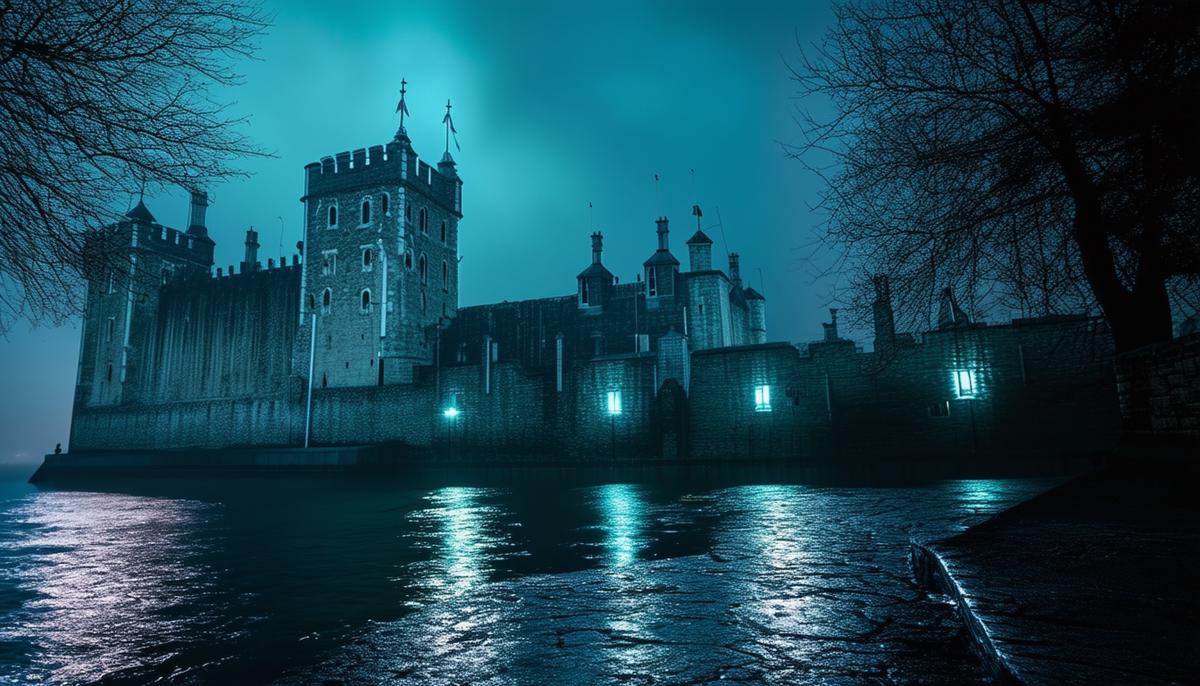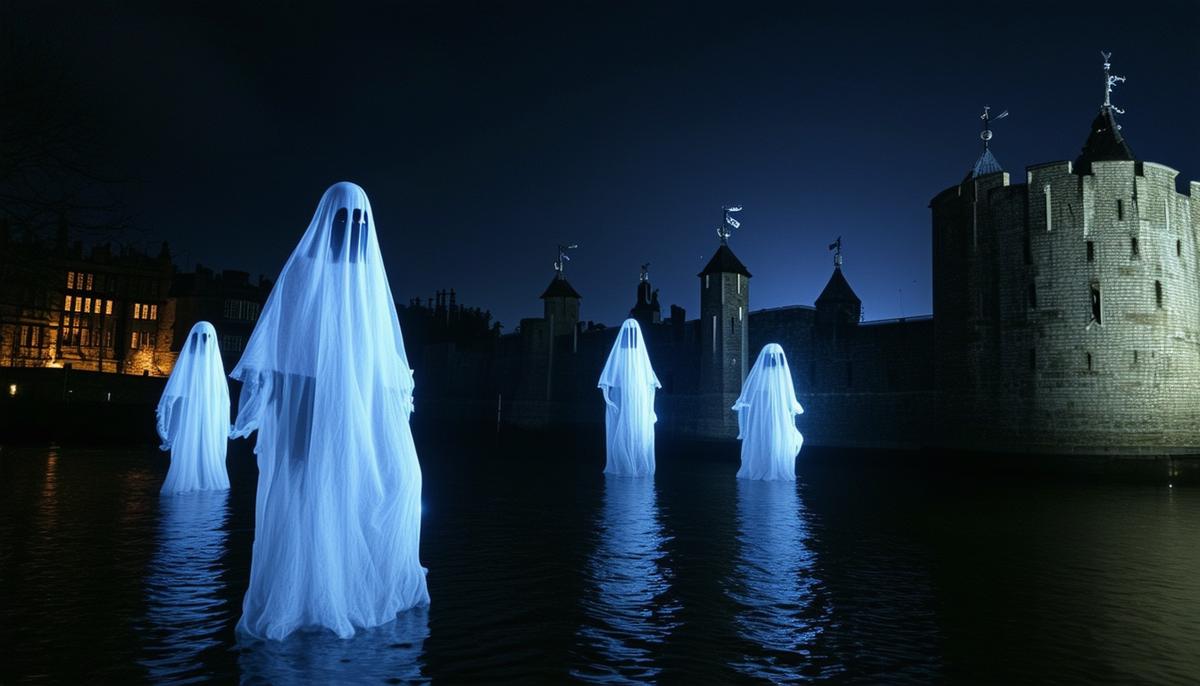Tower of London Ghostly Encounters
Picture walking through the Tower of London's old halls. The cold air chills you to the bone, mixing with the weight of history in this ancient fortress. It's a history of blood, betrayal, and restless spirits.
On foggy nights, you might see Anne Boleyn's ghost. Once a lively queen, she was killed on her husband Henry VIII's orders. Now, she floats through the halls carrying her own head. People say they hear her whispering for justice in a sad voice.
But Anne isn't alone. The ghost of Lady Jane Grey, the "Nine Days Queen," also walks here. She appears in a white dress, forever reliving her last moments before her unfair death.
In the chapels, ghostly chants can be heard. Guards report hearing old hymns, only to find nothing when they look.
The White Tower has its own ghost – the "White Lady." She's seen near the top of the building, looking angry and sad. A bad smell often comes before she appears.
Even animals haunt the Tower. Some say they hear a ghost lioness growling, reminding us of the Tower's old zoo.
"Be careful when you visit the Tower. You might hear a whisper, a sigh, or a distant growl. These restless souls are part of the Tower's story."
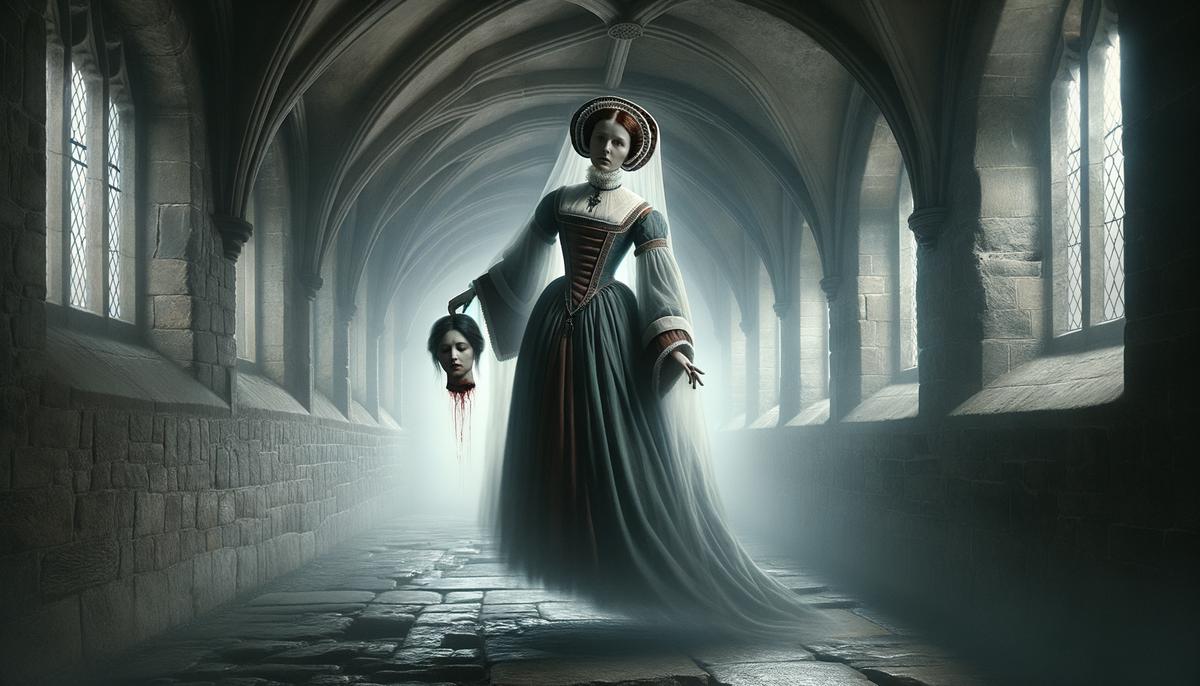
Anne Boleyn's ghost isn't just a faded spirit. She's a mix of strong feelings and sad history. When she appears, people feel very cold. Some say they feel her silk dress brush against them. Her empty eyes tell of love turned sour and lies that led to her death.
Anne looks bitter, like a queen wrongly taken from her throne. But sometimes, she seems softer, lost in thoughts of what could have been. These quiet moments show she's not always angry, just sad about the life she lost.
At night, moonlight shows a tear on her pale cheek that never falls. The air hums with her silent cry for justice.
In life, Anne was important in England's move from Catholic to Protestant. This change happened because Henry VIII wanted to divorce his first wife and marry Anne. Her quick rise and fall as queen left a big mark on history.
The Tower of London itself adds to Anne's story. Its old walls have seen many sad events, which might make her haunting stronger. The fortress is like another character in her ghostly tale.
Next time you're at the Tower, listen closely. Anne's presence is more than just a scary story; it's a living part of history. Her cries remind us that the past is never really gone.
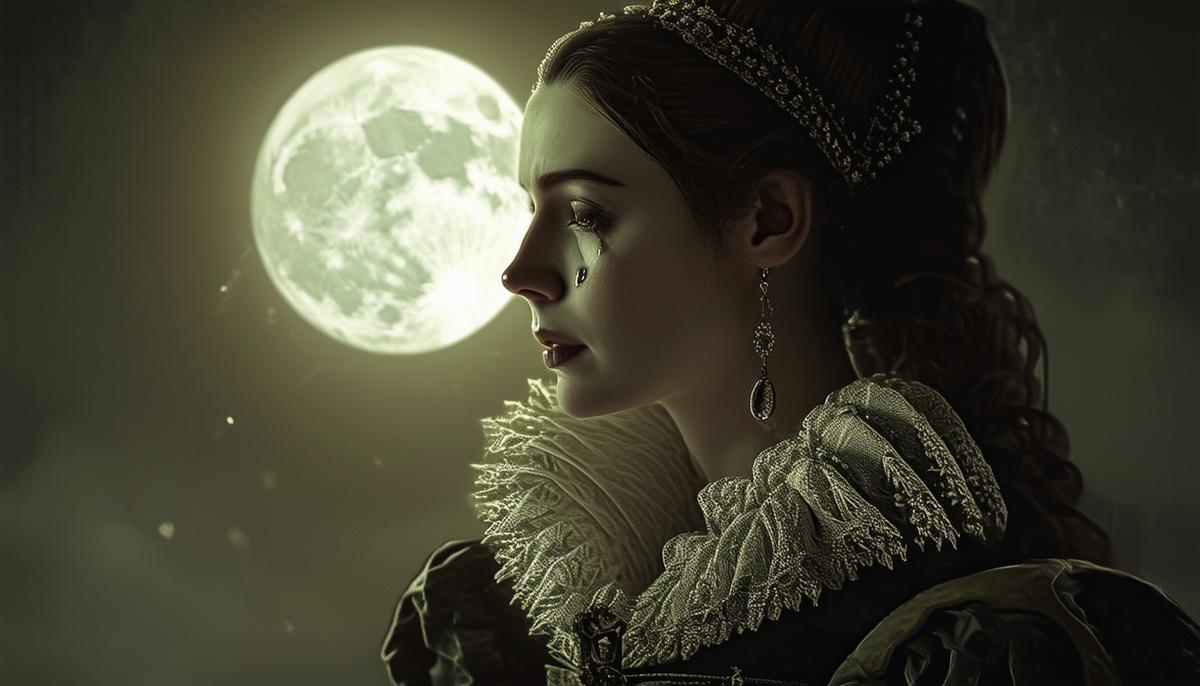
The She-Wolf of France: Queen Isabella
If Anne Boleyn's ghost is sad, Queen Isabella's is scary and strong. Isabella, wife of Edward II, was famous for turning against her husband, which led to his awful death. Her ghost in the Tower of London reminds us of her fierce hunt for power and justice.
Imagine this: It's a dark night at the Tower. As you walk, the air feels heavy. Then, from the shadows, Queen Isabella appears.
"She looks tall and strong, not sad like Anne Boleyn. Her eyes are sharp and cold, but also full of anger. She wears royal clothes and gives off a feeling of cold power. When you see her, you want to step back, but you can't look away."
Some say when Isabella's ghost is near, you can hear whips cracking and people crying out. This reminds us of how tough she was. Her story is about using her brain to take power from her husband. She made plans and fought back, even though it was hard for women to do that back then.
When Isabella's ghost shows up, people hear whispers in French. It seems like she's still thinking about the choices she made. She walks around the Tower like she's looking for answers about her difficult life.
Even though Isabella's ghost is scary, she's also interesting. She was a woman ahead of her time – independent and powerful. Her ghost reminds us how complex the game of power was back then.
After seeing Isabella's ghost, you might have more questions than answers. What other secrets are hidden in these old walls? What other ghosts might be watching?
As you leave the Tower, you feel curious and amazed. The stories of Anne Boleyn and Queen Isabella show us the real people behind the ghosts. With each tale, the Tower's dark history grows richer and more connected to time itself.
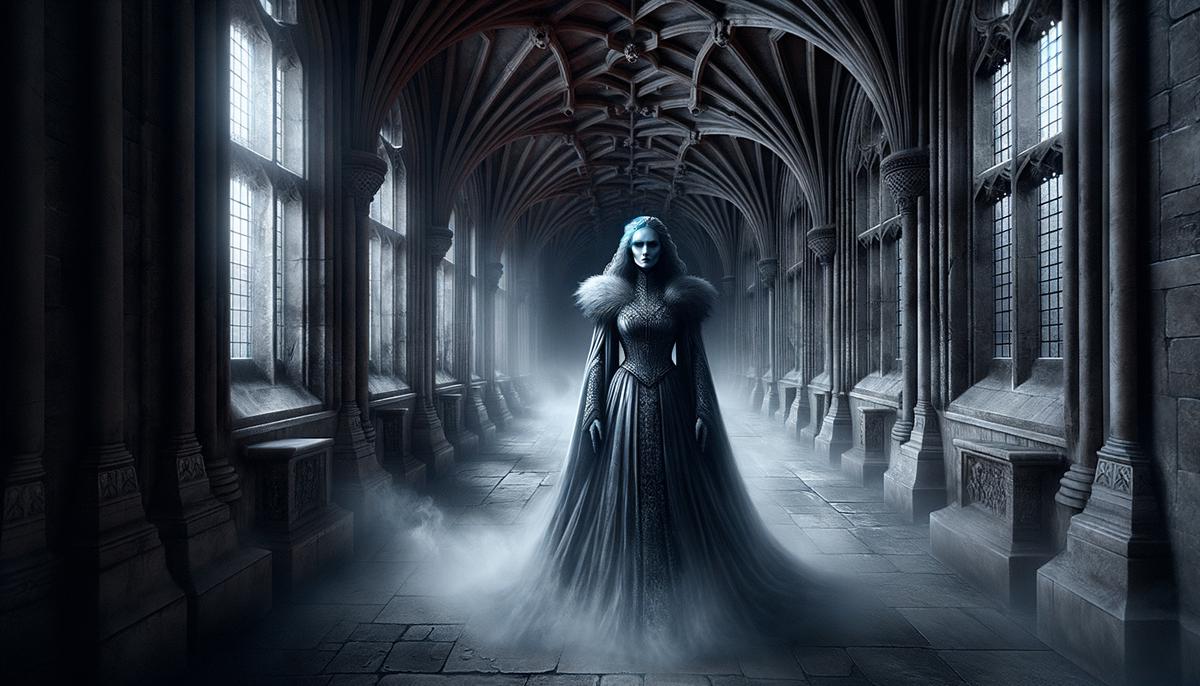
The Mysterious Princes in the Tower
In the middle of the Tower is one of the saddest mysteries in English history: the story of the Princes in the Tower. Imagine standing in front of the big stone fortress on a cold night. You feel like someone's watching you, and you know the ghosts of the past are near.
It's summer, 1483. Edward V, a 12-year-old boy, and his younger brother Richard are staying in the Tower. Their uncle, also named Richard, put them there to keep them safe. The boys often looked out the barred windows, feeling scared and confused.
Weeks went by. The boys' laughter faded away. Some nights, you might hear their faint footsteps in the halls, running up and down stairs, playing games to forget their scary situation.
No one knows what happened to the boys. Did their uncle, who became King Richard III, have them killed to keep his crown? Or were they taken away in secret? These questions still bother people today.
Visitors to the Tower say they've seen the boys' ghosts near the Bloody Tower. They appear at midnight, one tall and fair, the other small and delicate. They look at people with sad eyes, like they're asking for justice.
"Some people say they hear the boys' voices, laughing and crying, like they're reliving their last moments over and over. Imagine being a guard and seeing these ghost children for just a second before they disappear."
The Tower's walls seem to whisper the boys' names, reminding us of this unsolved mystery that still makes people sad.
When you visit the Tower, be careful. The past is very alive here. The ghosts and mysteries make it an unforgettable place. It's like the Tower itself wants someone to solve its secrets and bring light to its dark corners of history.
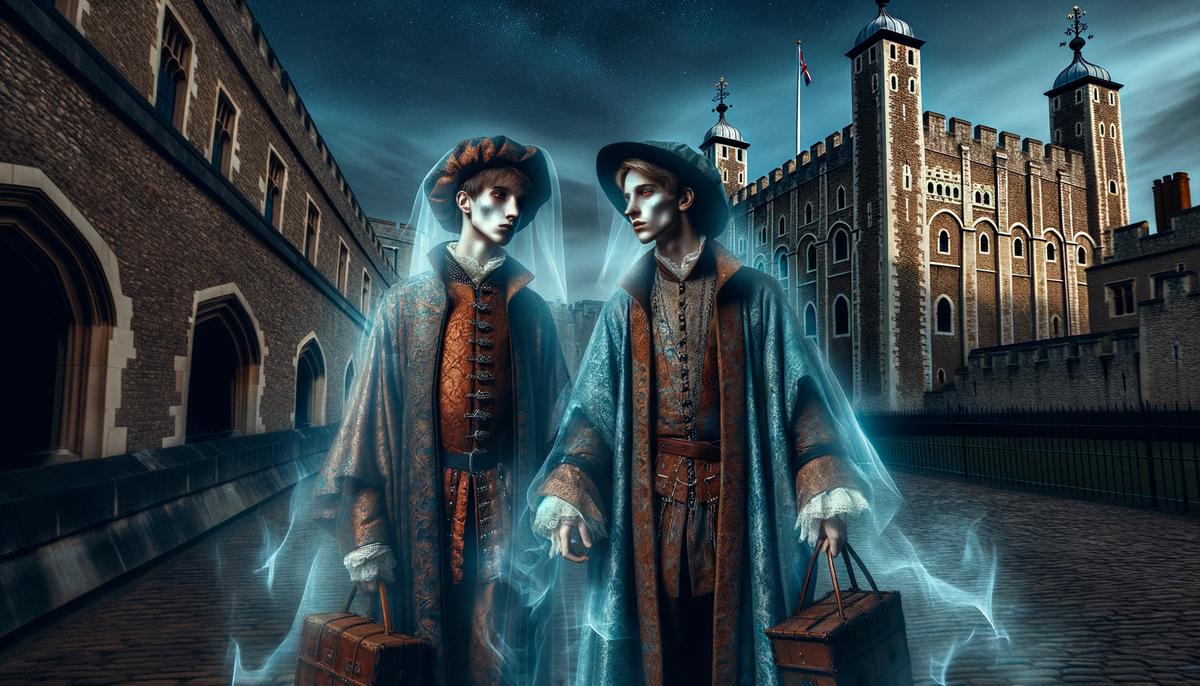
The White Lady: Characterization, Color Symbolism, and Mood Creation
The White Lady is a ghostly figure at the Tower of London. She's known for her haunting beauty and mystery. When fog covers the Tower grounds, she often appears.
The White Lady glides through the air near the Tower's walls. Her long white gown stands out against the dark stone. This contrast highlights her otherworldly nature and represents lost innocence within the Tower.
Her white color symbolizes both purity and mourning. This adds depth to her story, suggesting she might be a bride who died too soon or a noble person trapped by an early death.
"As eerie as she is beautiful, the White Lady embodies the Tower's tragic past."
The White Lady creates a sad mood. Imagine walking through the Tower at night and seeing her. You might feel:
- A chill in the air
- A sense of longing
- Unexplained sorrow
Unlike other ghosts, the White Lady doesn't interact with the living. Her eyes are usually downcast, lost in eternal sadness. This adds to her mystery and makes people think about the Tower's tragic past.
The White Lady reminds us of the many untold stories within the Tower of London. Her silent presence captures human emotions like loss, love, and the search for peace.
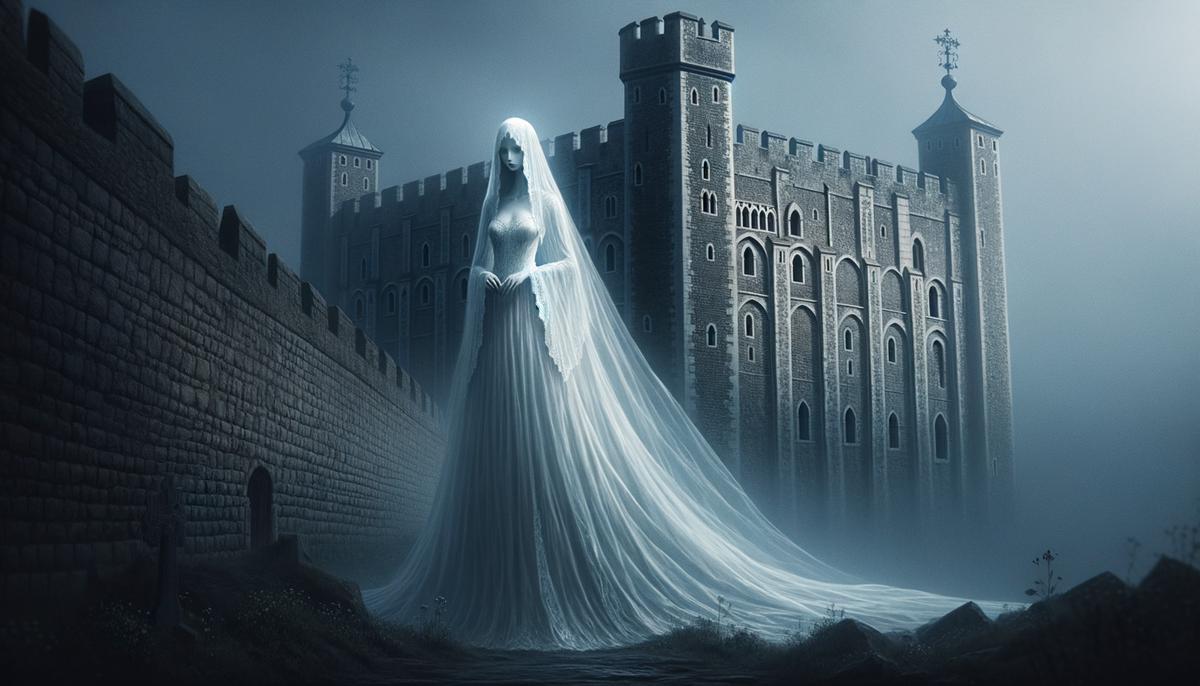
The Tortured Spirits: Pathos, Sensory Details, Historical Anecdotes
The Tower of London holds many painful memories, shown through its tortured spirits. These ghosts remind us of the Tower's dark history.
One such spirit is Margaret Pole, the 8th Countess of Salisbury. She was killed in a brutal way in 1541. Now, her ghost limps through the Tower gardens, still in pain from her violent death.
The Traitors' Gate is another spot known for its sad history. Many prisoners, including Mary, Queen of Scots, passed through here. People say they can still smell the damp air and hear the echoes of chains and cries.
"The air around Traitors' Gate is thick with the despair of centuries past."
Guy Fawkes, famous for the Gunpowder Plot of 1605, is another tortured spirit. He was badly hurt during questioning at the Tower. Visitors sometimes feel a tightness in their chest, as if they can sense his pain.
The Bloody Tower holds its own horrors. John Gerard, a priest, was tortured here but never gave up his faith. The room where he suffered is said to still carry the smell of sweat and blood.
These spirits remind us of human suffering and strength. Their stories are woven into the Tower's history, showing how people can endure even in the worst times.
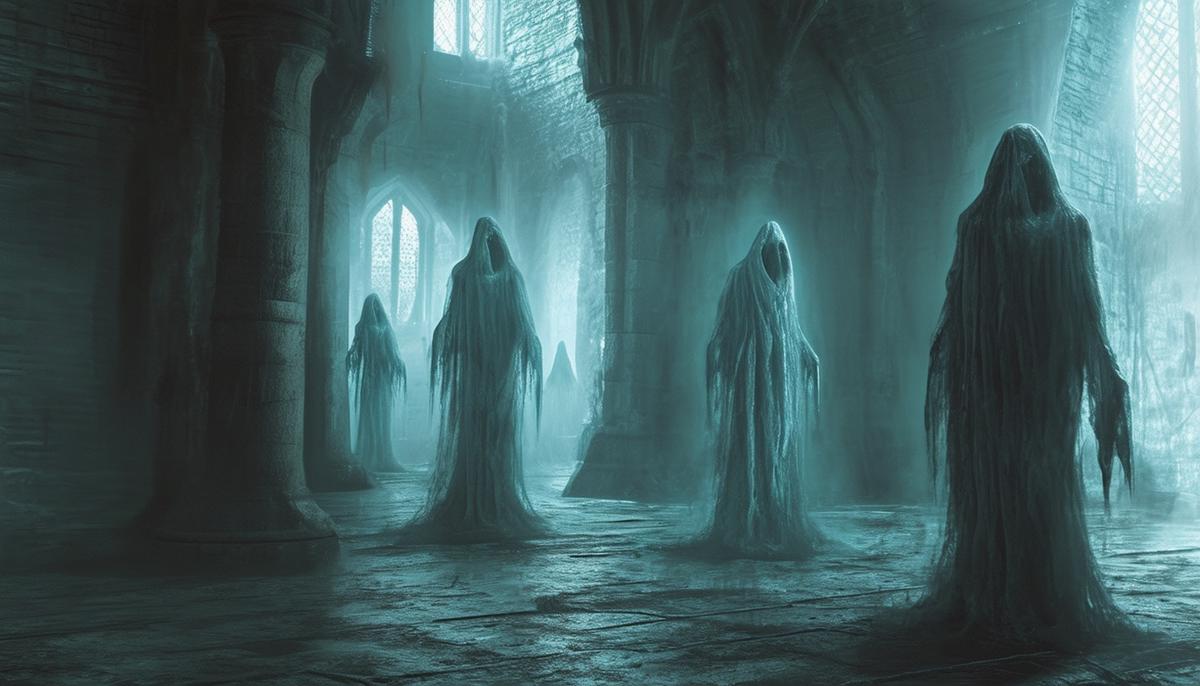
Modern Encounters: Dialogue, Realism, First-Person Accounts
Today, people still have spooky experiences at the Tower of London. These stories mix history with ghost tales, making the past feel alive.
Sarah Jenkins, a historian, shares her story:
"I was in the Queen's House at midnight when I felt a sudden cold. I heard whispers and saw a woman in old-fashioned clothes. I think it was Anne Boleyn's ghost."
Tom Williams, a night guard, had his own experience:
"I heard children laughing near the Bloody Tower. When I looked, I saw two boys in old clothes playing. They vanished when I blinked. I later learned they might have been the princes in the Tower."
Tourists also have strange encounters. Emma Hargrove from the U.S. says:
"In the White Tower, everything went quiet. I felt a cold breeze and intense sadness. The feeling stayed until we left the room."
Even tour guides have unexplained moments. Claire Roberts recalls:
"I saw a man in medieval armor near the chapel. When I got closer, he disappeared. For a moment, I felt like I had gone back in time."
These modern stories show that the Tower of London is still connected to its past. They suggest that maybe the spirits of those who lived and died there are still present, mixing with our world today.
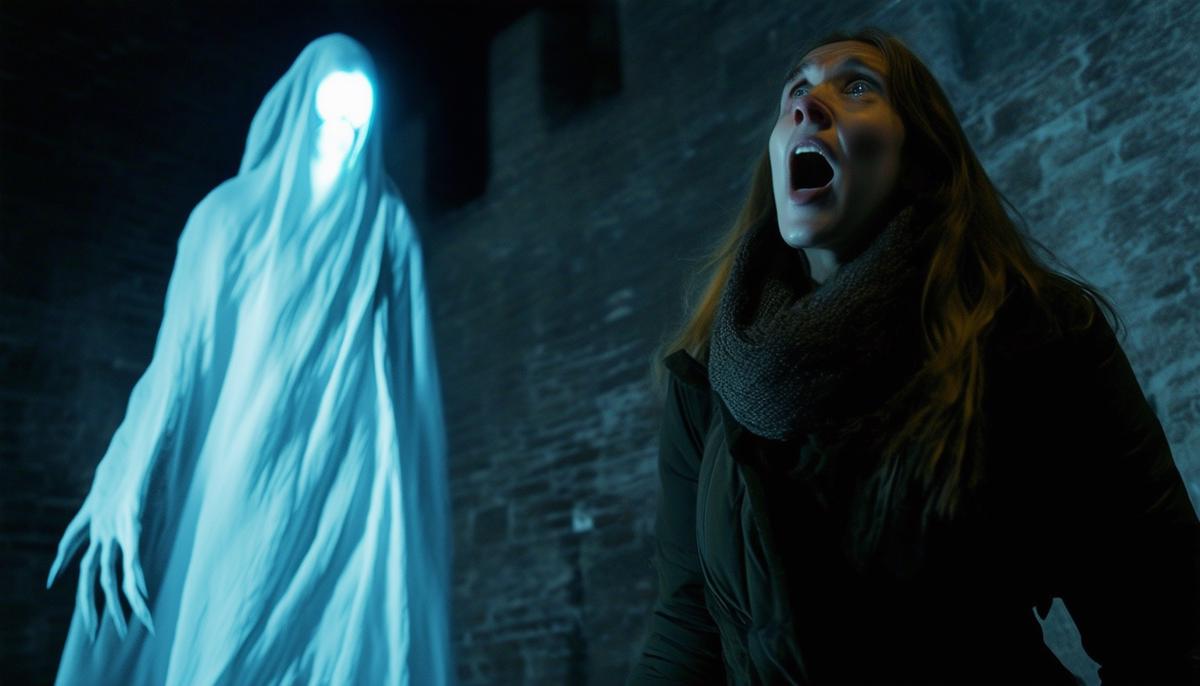
Conclusion: The Tower's Eternal Guardians
As night falls, the Tower of London stands as a silent witness to centuries of history. Its old stones hold the secrets of ghosts and legends. From Anne Boleyn to the Princes in the Tower, each ghost tells a part of the Tower's dark story.
These phantoms are more than just tales; they are keepers of history. Their presence reminds us of past wrongs and ongoing struggles. Their stories mix with real events, making visitors feel like they've stepped back in time. Every sound and chill in the air seems to whisper from the past.
Recent ghost sightings, like those of Sarah Jenkins and Tom Williams, bring these old stories to life. They show how the Tower's history still touches us today.
"The Tower is more than just an old building; it's a living reminder of the past. Its ghostly guardians teach us about strength, justice, and the power of untold stories."
As you leave the Tower, take a moment to listen. You might hear faint echoes from long ago—a whisper, a laugh, or the sound of chains. These remind us that while the Tower is old, its stories are still very much alive.
In the end, the Tower's true legacy lies in its ghosts. They are the eternal guards of its history, keeping its tales alive to inspire and teach us. As you go, remember these ghosts. They carry the weight of history and remind us that we, too, are part of an ongoing story.
